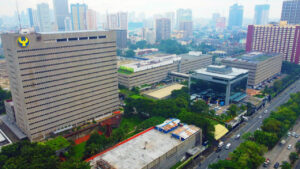YIELDS on the Bangko Sentral ng Pilipinas’ (BSP) term deposits declined on Wednesday as Philippine inflation settled within target in December and in full-year 2024, which could open the door to further rate cuts this year.
Demand for the central bank’s term deposit facility (TDF) amounted to P339.78 billion on Wednesday, well above the P180-billion offering. This was also higher than the P155.222 billion in bids for a P240-billion offer the prior week.
Broken down, tenders for the seven-day papers reached P213.661 billion on Wednesday, above the P100 billion on the auction block. This was also higher than the P89.001 billion in bids for the P150-billion offering of six-day term deposits the previous week.
Banks asked for yields ranging from 5.715% to 5.8745%, a narrower band compared to the 5.7% to 6% seen a week ago. With this, the average rate of the one-week deposits dropped by 9.27 basis points (bps) to 5.8193% from 5.912% previously.
Meanwhile, the 14-day papers fetched bids amounting to P126.119 billion, higher than the P80-billion offer and the P66.221 billion in tenders for the P90 billion in 13-day deposits auctioned off last week.
Accepted rates for the tenor were from 5.84% to 5.97%, also narrower than the 5.825% to 6.1% range seen last week. This caused the average rate of the two-week papers to decline by 2.22 bps to 5.9319% from 5.9541% in the prior auction.
Last week’s TDF tenors were shorter than the usual maturities due to a holiday.
The central bank has not auctioned off 28-day term deposits for more than four years to give way to its weekly offerings of securities with the same tenor.
The term deposits and the BSP bills are used by the central bank to mop up excess liquidity in the financial system and to better guide market rates.
TDF yields were lower week on week following the release of Philippine inflation data, Rizal Commercial Banking Corp. Chief Economist Michael L. Ricafort said in a Viber message.
December headline inflation remained within the BSP’s 2-4% target despite accelerating from the November print, which would support future policy rate cuts, Mr. Ricafort said.
Philippine headline inflation picked up to 2.9% in December from 2.5% in November due to higher utility and transport costs, the government reported on Tuesday.
This marked the third consecutive month of faster inflation and was higher than the 2.7% median estimate in a BusinessWorld poll of 13 analysts.
Still, this was slower than the 3.9% print in the same month a year prior and was within the BSP’s 2.3%-3.1% forecast for the month.
The December print brought the full-year 2024 inflation average to 3.2%, slower than 6% in 2023 and marking the first time since 2021 that the consumer price index settled within the BSP’s 2-4% annual target. This was also the slowest since the 2.4% average in 2020 and matched the central bank’s baseline forecast for 2024.
The central bank said the within-target inflation outlook and well-anchored inflation expectations “continue to support the BSP’s shift toward a less restrictive monetary policy.”
The Monetary Board has slashed benchmark borrowing costs by a total of 75 bps since it began its easing cycle in August, bringing its policy rate to 5.75%.
BSP Governor Eli M. Remolona, Jr. last month said that while the BSP remains in an easing cycle, 100 bps worth of cuts this year may be “too much” amid inflation concerns. He added that they will continue to bring down benchmark interest rates in “baby steps.”
Mr. Remolona said the central bank is “neither more dovish nor less dovish” and is open to delivering another cut in their first policy meeting for this year, which is scheduled for Feb. 20. — Luisa Maria Jacinta C. Jocson

